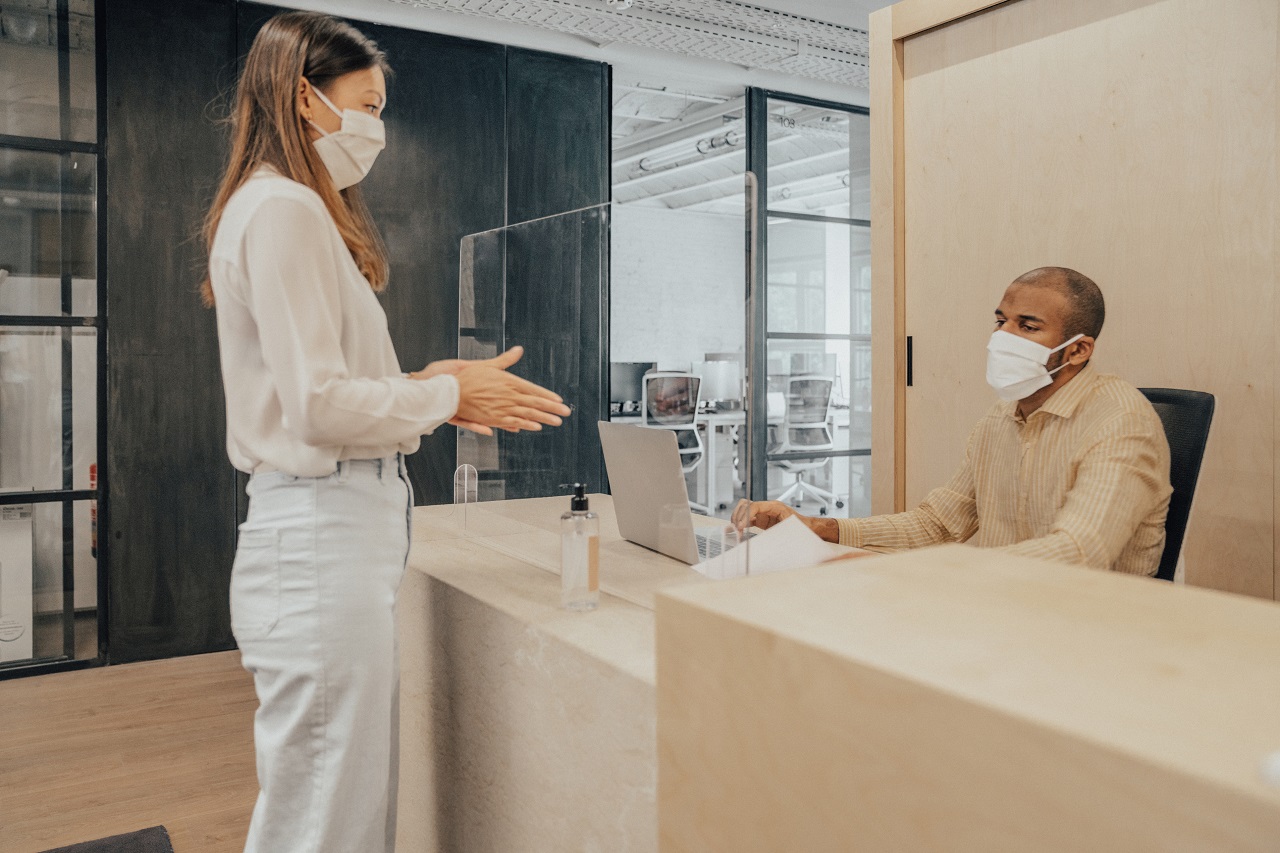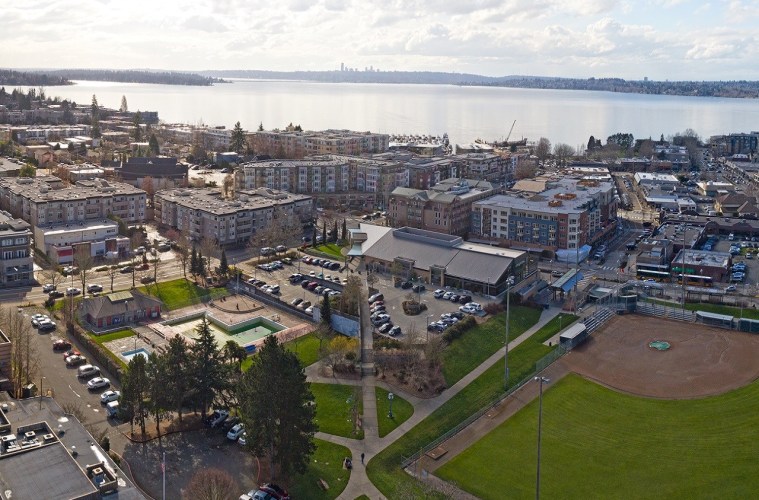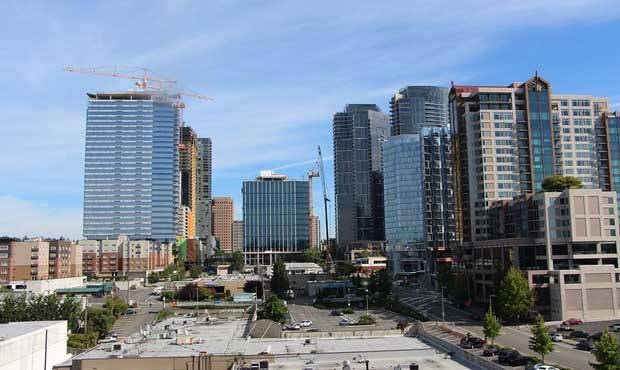How Architects are Designing Offices in the Pandemic

COVID-19 has changed just about every facet of life — and that includes the very architecture that surrounds us. As remote work and virtual gatherings have become the norm, architects and designers are reevaluating the ways in which they design communal spaces.
In particular, offices have proven challenging as architecture firms address questions like which employees will have a desk in the office, and what will the capacity of the office be?
For some firms, the answer is not in reducing the number of desks in the office, but in making sure every employee has their own space to work from. Hot desking (the practice of having employees share workspaces with others and not assigning specific desks to employees) is unlikely to regain favor anytime soon, as workers are hyper-aware of contagions and the potential risk factors of sharing a space with others.
To minimize contact, offices and reception desks are now being designed with food delivery hubs. With the spike in food delivery services during the pandemic, creating designated spaces for drop-offs minimizes both the potential risks and the hassle of meeting a delivery driver.
Additionally, new offices are being designed with more flexible workspaces for employees to take advantage of, including phone booths, huddle and conference rooms and outdoor terraces with Wifi access.
The appeal of more outdoor space has also spilled over into the design of new apartment buildings, as units are being designed with more outdoor spaces for residents. Additionally, some design firms are working to design larger units for the benefit of residents, although this approach does cut into profits.
One thing both office and residential design have in common is their new source of inspiration — healthcare facilities. In the past, many design firms had turned to the hospitality industry for their inspiration, focusing on comfort and aesthetics. These days, it’s the opposite, as commercial and residential architects prioritize health and sanitation.
For many, this means increased investment in HVAC and air filtration devices. Though not the most exciting development, these fixtures are effective and increase peace of mind for those in the building. Additionally, antibacterial surfaces and easy-to-sanitize materials, like tile and porcelain have also seen an increase in popularity.
No matter how long the pandemic lasts, its impacts will be felt for some time. Among the long-term changes, the design of our homes and offices will also be impacted for the foreseeable future.
This article was originally posted on Bisnow by Jon Banister and GettheWReport
Kirkland Grows in Population, Housing, and Business

Across Lake Washington from Seattle, quiet Kirkland is in for a bustling future. Prior to the pandemic, the city was experiencing growth as it worked to accommodate 8,361 new housing units and 22,435 new jobs by 2035, averaging out to about 363 housing units and 975 jobs per year. Even with the pandemic in mind, Kirkland is preparing for a growth spurt.
The cause of this exponential growth? Everything from continued investment from businesses like Google, new construction projects and the annexation of land from nearby Finn Hill, Juanita and Kingsgate. The result is a population increase of 82 percent between 2011 and 2019, and a sizeable increase in land area thanks to the newly incorporated areas.
To accommodate a growing population and increasing job opportunities in the area, Kirkland is also developing a Bus Rapid Transit (BRT) system that will include a new station in the city which will serve the greater I-405 corridor. The station will also allow for transit-related development and new construction within a half-mile radius of the station. Currently, the area includes multi-family residences, schools, parks and commercial/retail and office spaces.
One of the other notable new projects includes the completion of the Village at Totem Lake. The 26-acre urban lifestyle village has been under construction since 2016, but the development plans to wrap up by the end of this year. The Village includes commercial tenants such as Cinemark, Whole Foods and Nordstrom Rack, while the nearby Aura Totem Lake apartments have 202 housing units available, with two more complexes to be completed by spring 2021.
Another developing property, Kirkland Urban, is a mixed-use project on 11.5 acres in downtown Kirkland. The project caught the attention of Google, who purchased most of the property for $435.7 million in 2019, and has now added 1.1 million square feet of office space in the city. Google already had offices in the area, and during the pandemic many of its employees will continue to work from home. Additional businesses in the area will include restaurants, bars, shopping and more housing at the recently-opened Uptown Apartments.
Thanks to its rapid growth, Kirkland is now more committed than ever to the “Innovation Triangle” it forms with Bellevue and Redmond. Together, the three cities have formed an attractive hub for tech businesses and workers alike, as they foster improved commutes, residential areas, job opportunities and positive growth.
Please feel free to reachout with any questions you have!
Karen Prins
karen@karenprinsrealestate.com
This article was originally posted on 425 Business by John Stearns and on GettheWReport.com
 Facebook
Facebook
 X
X
 Pinterest
Pinterest
 Copy Link
Copy Link
